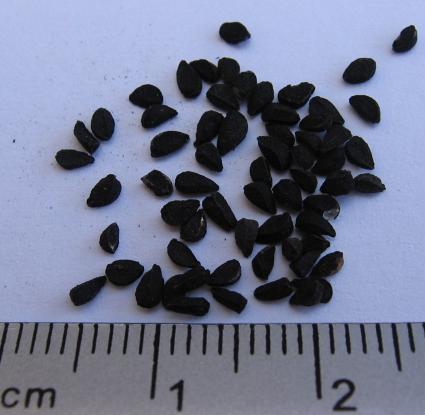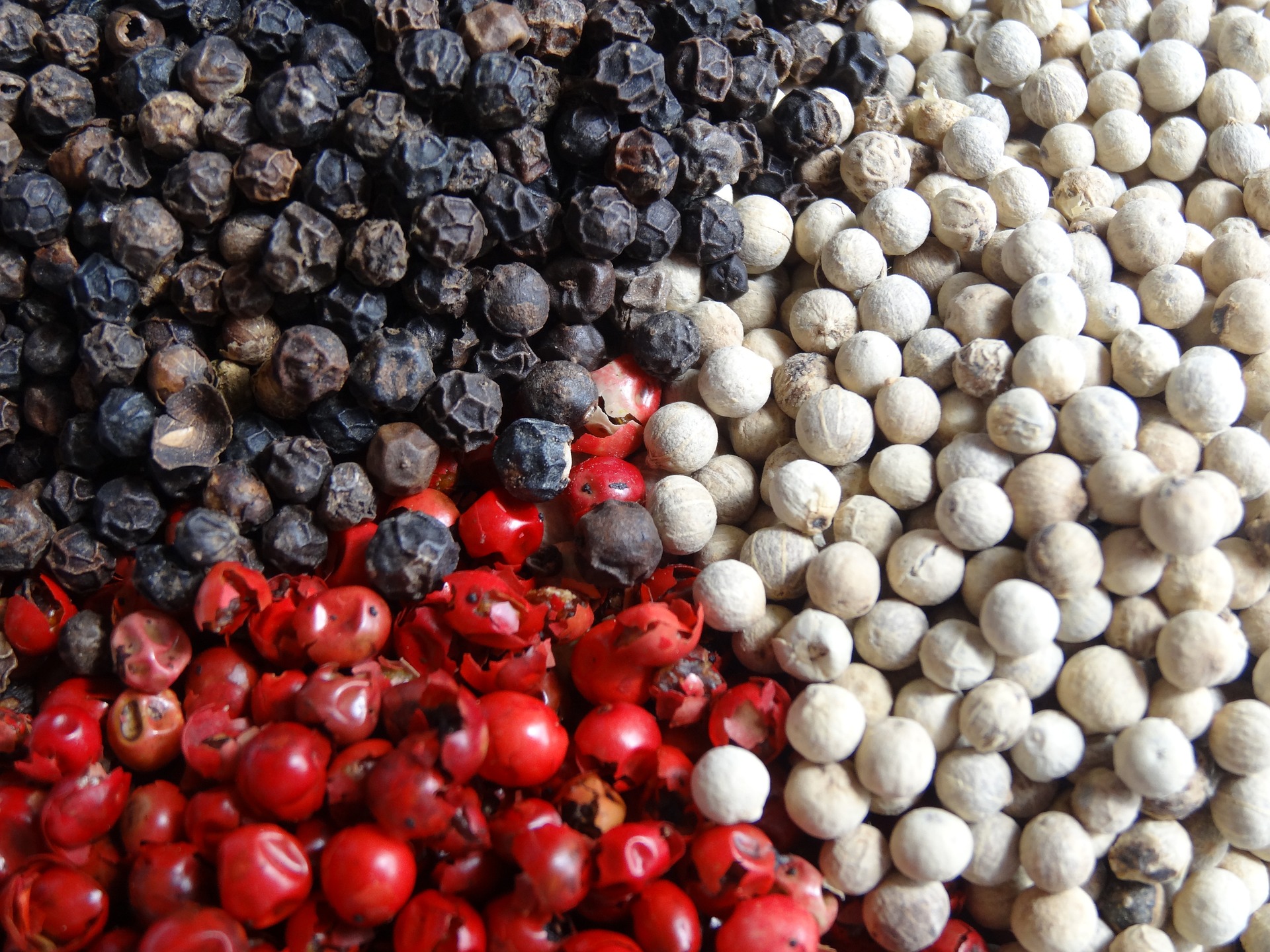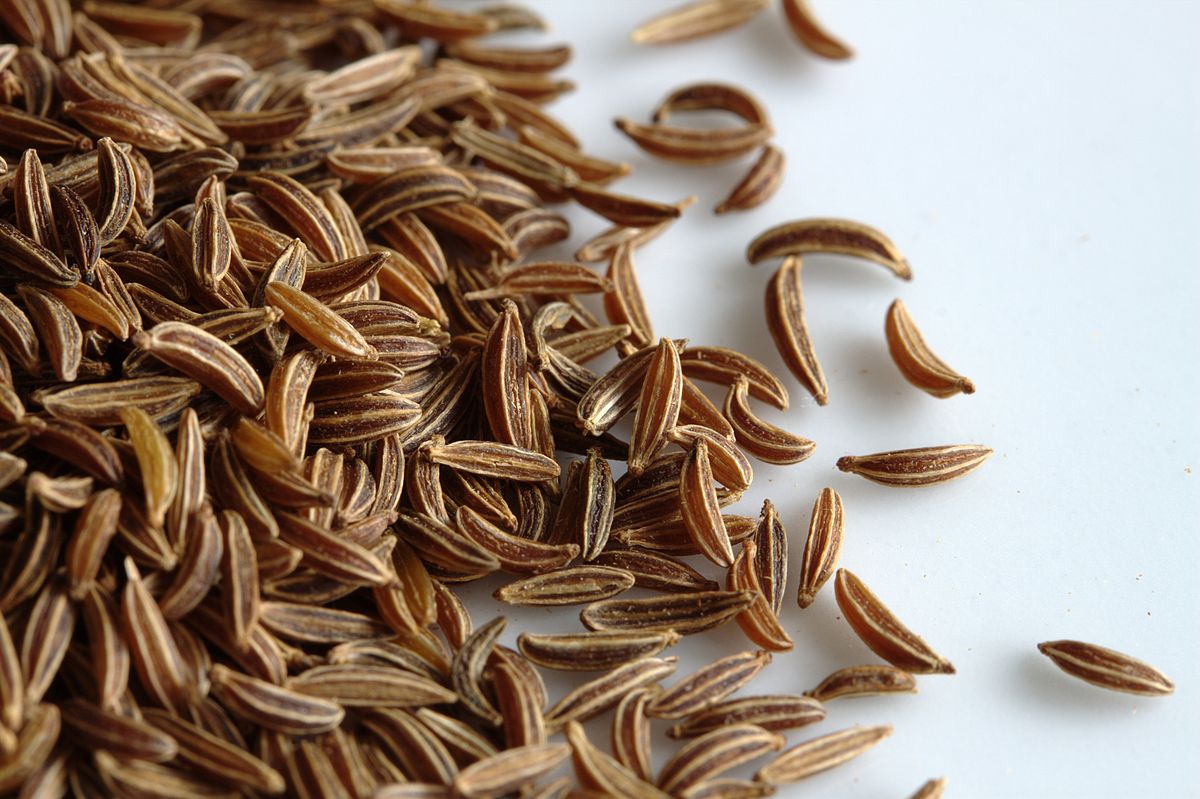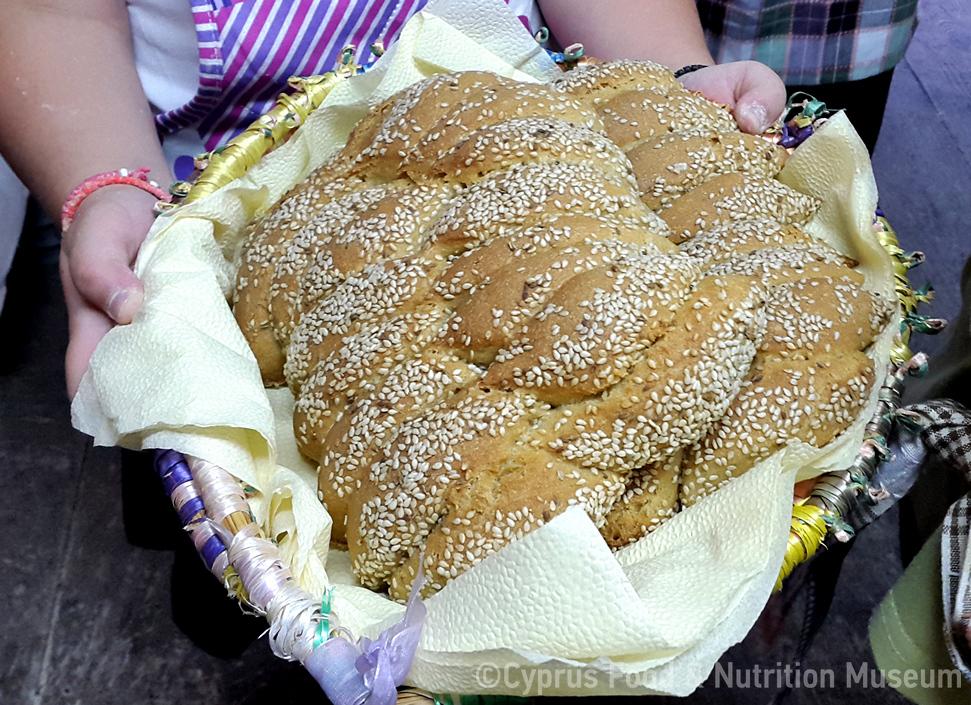A spice used in many traditional bread preparations.
Name - Origin
In Greece it is called mavrosísamo (black sesame seed), although it has nothing to do with the sesame plant. Dioscorides called it μελάνθιον (melánthion) due to its black colour. The flower which gives us its fragrant seeds is delicate and beautiful and in Europe it was given the poetic name "Love in the mist”. The Nigella Sativa flower is found in various parts of Cyprus. Its seeds have a spicy and peppery taste and are used as a spice. The seeds combine well with dairy products and pittes (Kythraiotou, 2009) and usually are combined woth sesame seeds in breads and buns (Petrou-Poeitou 2013, entry Μαυρόκοκκος, 85).
ETYM. < μαύρο (black) + κόκκος (seed)(Yangoullis 2009, entry μαυρόκοκκος,o, 277)
Scientific name: Nigella Sativa (Kythraiotou, 2009).
Functional and symbolic role
Mavrokokkos, a very popular seed in Cyprus, is part of the trio: sesame seeds, anise seeds and mavrokokkos that coat the traditional Cypriot koullouri bread and other traditional bread preparations (Kythraiotou 2009).
Traditionally, it was considered to have magical properties and was said to ward off the evil spirits and the evil eye (Kythraiotou 2009).
While the new mother was forming crosses on the walls, the midwife or another woman was throwing seeds or fruit. One of the most common seeds used was mavrokokkos. It was believed that it would drive away evil. The midwife would also throw mavrokokko and wheat on the new mother's bed and it would be placed on the new mother's handkerchief for the same reason. Mavrokokkos was also gifted to the new baby by people who would visit it, in order to keep the evil away. It was also used on the wedding bed and it was left there to ward off evil away from the couple. When a woman was delivering, they would tie an odd number of mavrokokkos seeds on her scarf or between the bedsheets until up to the first forty days after delivery. In addition, whenever the new mother would get up, she would have mavrokokko tied to her waist or to her head scarf. The baby would be protected in a similar way, i.e. by putting mavrokokko tied in a cloth to the baby's head scarf or in the cradle. All these practices would keep the evil spirits away from both the new mother and the baby (Protopapa 2009, 212-213, 216, 218, 324, 406-408).
Additional information and bibliography
Yangoullis K. G. (2009), Θησαυρός Κυπριακής Διαλέκτου. Ερμηνευτικό, Ετυμολογικό, Φρασεολογικό και Ονοματολογικό Λεξικό της Μεσαιωνικής και Νεότερης Κυπριακής Διαλέκτου, Βιβλιοθήκη Κυπρίων Λαϊκών Ποιητών, Theopress Publications, Nicosia.
Kypri Th. D. (ed.) (1983 [2003²]), Υλικά διά την σύνταξιν ιστορικού λεξικού της κυπριακής διαλέκτου, Μέρος Β΄, Γλωσσάριον Ξενοφώντος Π. Φαρμακίδου, Publications of the Centre for Scientific Research, IX, Nicosia.
Kythraiotou F. (2009), Τροφή: αφορμή σχέσης, University of Nicosia Publications, Nicosia.
Petrou-Poeitou E. (2013), Από πού κρατάει η σκούφια τους. Λέξεις και ιστορίες από τον κόσμο της γεύσης, Epiphaniou Publications, Nicosia.
Protopapa K. (2009), Τα έθιμα της γέννησης στην παραδοσιακή κοινωνία της Κύπρου, Publications of the Centre for Scientific Research, XLIX, Nicosia.
Florentia Kythraiotou, Demetra Zannetou, Stalo Lazarou, Argyro Xenophontos, Tonia Ioakim




